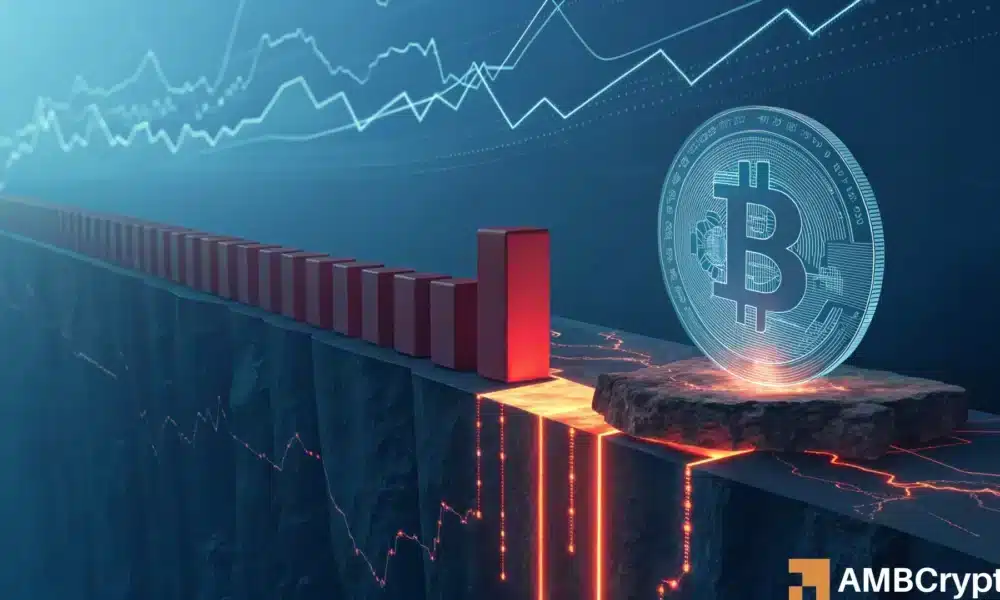- Bitcoin has been hovering just below dense short liquidation clusters between $83,100 and $83,500
- Open interest dropped by 9% in one week, highlighting trader exit or liquidation pressure
Bitcoin [BTC] is nearing a critical threshold, with its price now close to tightly packed short liquidation levels.
In fact, on 30 March, TheKingfisher placed Bitcoin at $82,621.9, with the cryptocurrency positioned between two opposing liquidation zones on the charts.
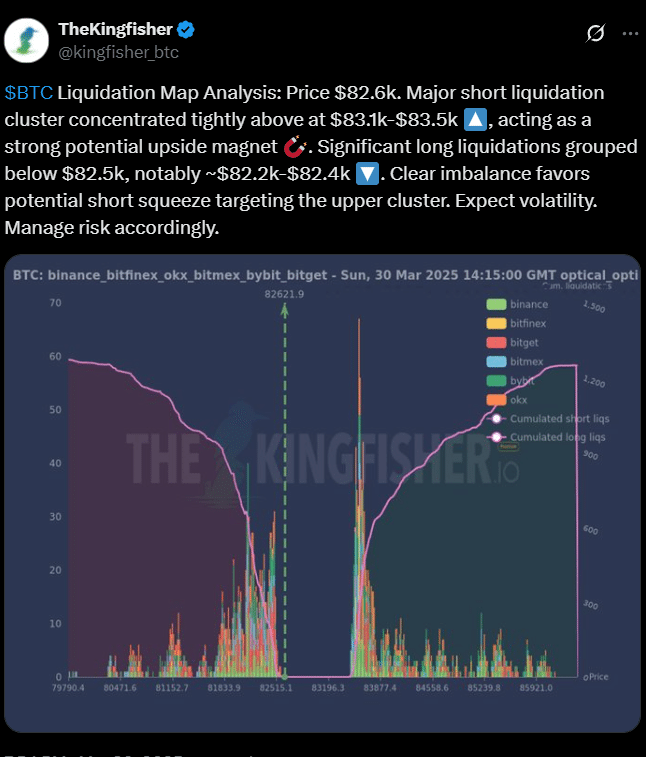
Source: X
At the time of writing, the short positions cluster was between $83,100 and $83,500, while the long liquidations stretched below $82,400. This compression sets the stage for further volatility on the charts.
A squeeze waiting to happen?
Zooming into the chart structure, the imbalance seemed to be clear.
The short liquidation band sat just 0.6–1.1% above spot. Meanwhile, long exposure seemed to be more widely dispersed. This creates an asymmetrical pressure zone favoring bulls if the upper boundary is breached.
Now, consider how this unfolds across trading platforms.
Binance and Bybit highlighted the most concentrated short positions, based on color-coded zones in the heatmap. This suggested platform-specific risk. If price begins to climb, these clusters could trigger stop-outs first – Pushing Bitcoin into a forced buying cycle.
Support for this setup comes from intraday heatmap activity too.
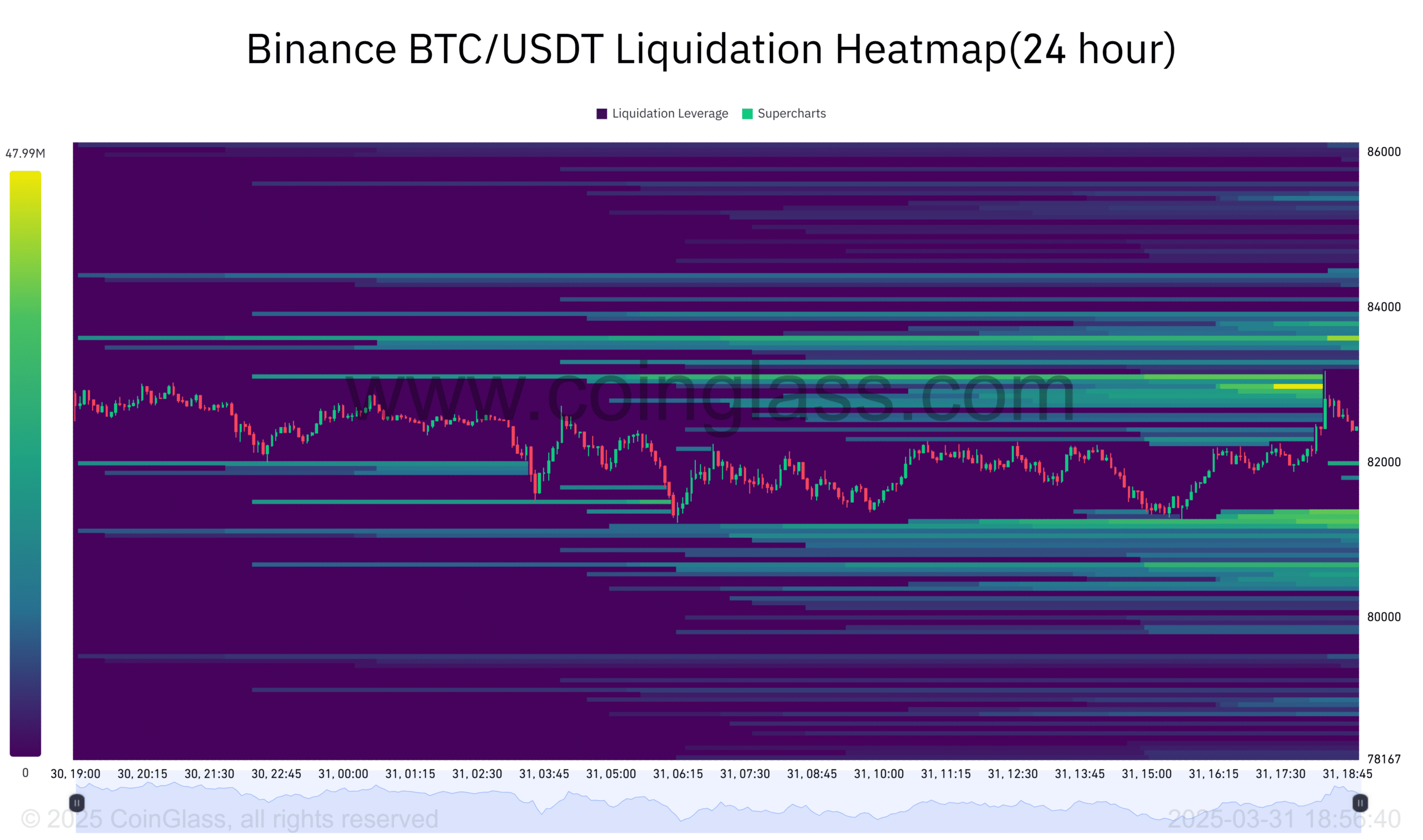

Source: CoinGlass
Coinglass data also showed that Bitcoin rose from $80,673 to $83,618 on 31 March. Liquidation leverage surged to $35.43M during this move. The timing wasn’t random though, as most activity occurred between 15:15 and 18:30.
A surge… or just the start?
Layer in Bybit’s numbers, and the signal strengthens.
In fact, a separate heatmap recorded the session’s peak at $83,642. Liquidation leverage hit $48.98M, with over 70% of total liquidations packed between $81,000 and $83,600.
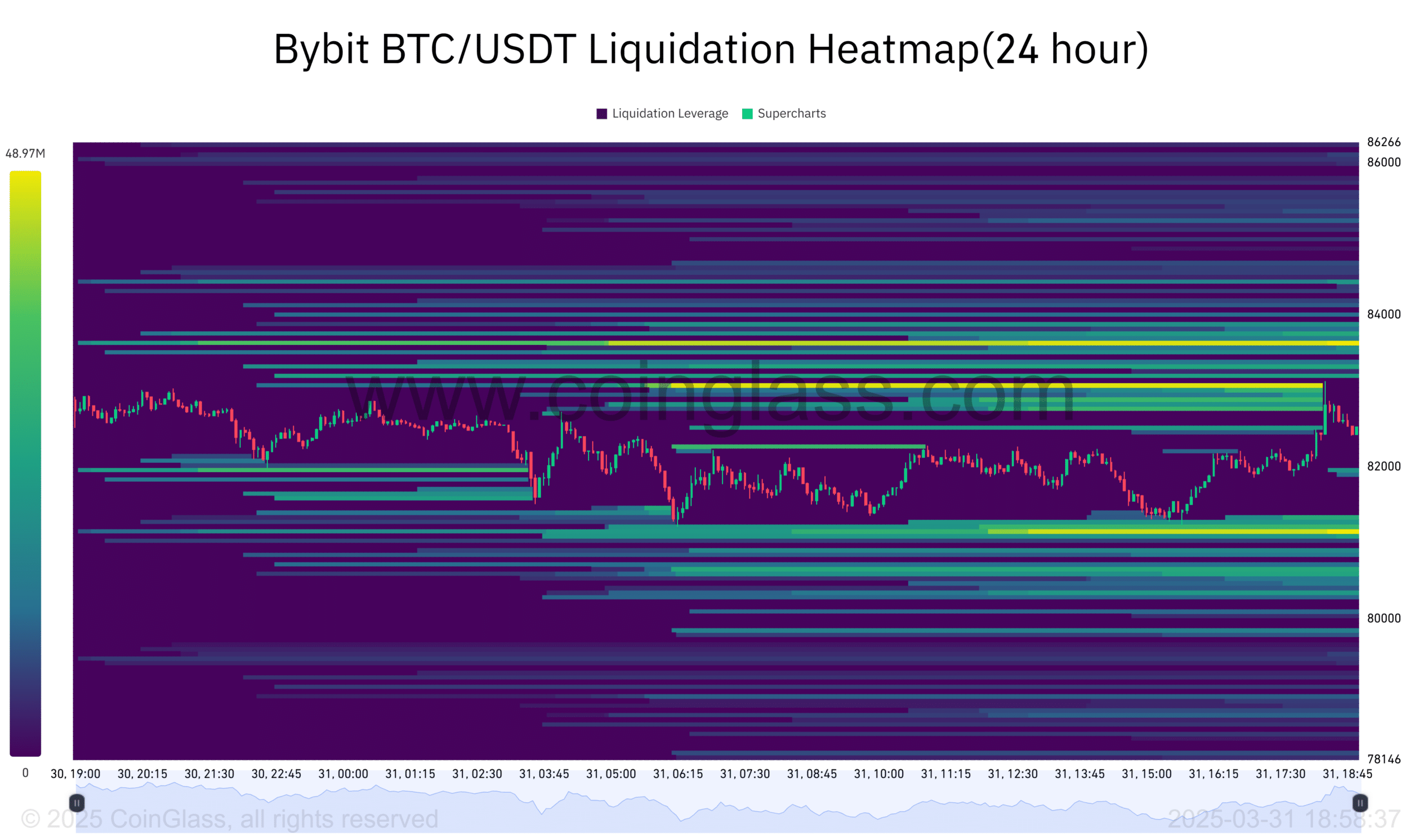

Source: CoinGlass
This seemed to confirm that leveraged short positions were stacked near its press time levels.
What sits behind this leverage though? Well, Exchange Netflows might offer a clue.
According to CryptoQuant, for instance, Bitcoin outflows have dominated Binance and Bybit since February.
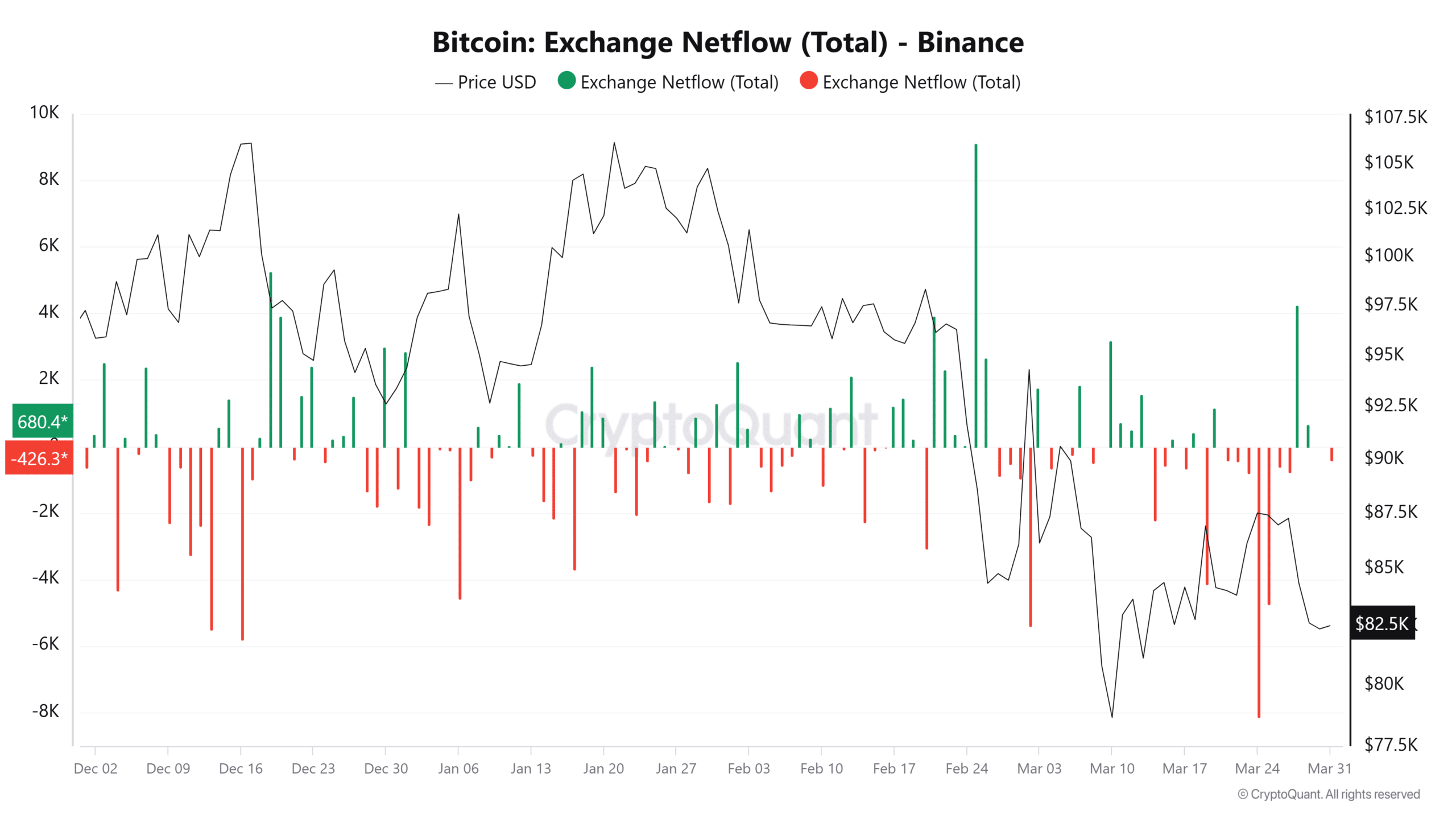

Source: CryptoQuant
Traders have been pulling assets amid the cryptocurrency’s falling prices.
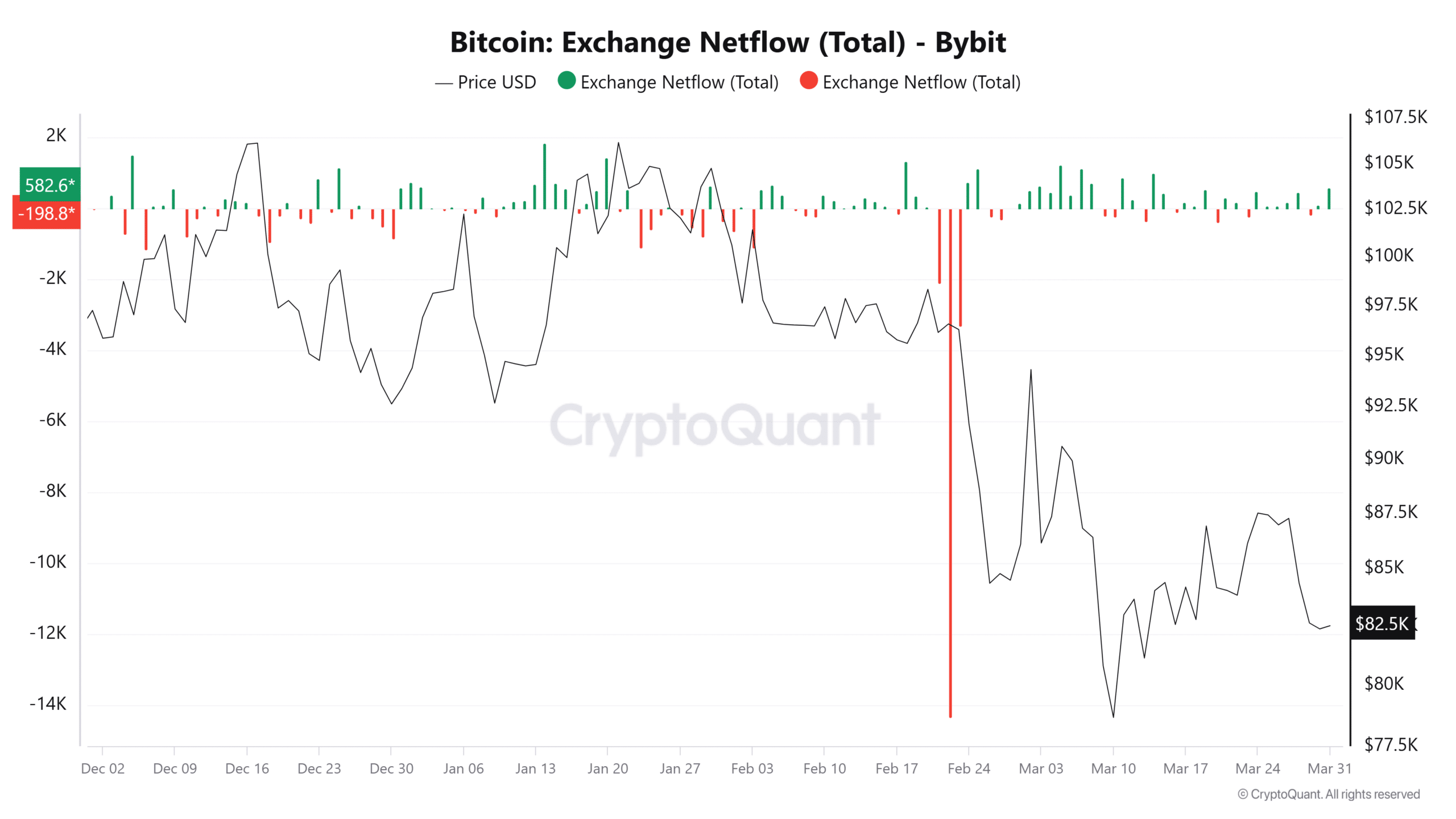

Source: CryptoQuant
Even after inflows of 4,258 BTC on 28 March, the market has remained under pressure – A sign that these were likely short-term positioning inflows, not long-term accumulation.
Look back to see forward
Zoom out further, and the price trend highlighted this sentiment.
Since peaking at $106,164 on 21 January, Bitcoin has dropped by 22%, closing March at $82,500. This decline seemed to be in line with persistent outflows and increasing liquidation events.
Then, there’s the funding rate.
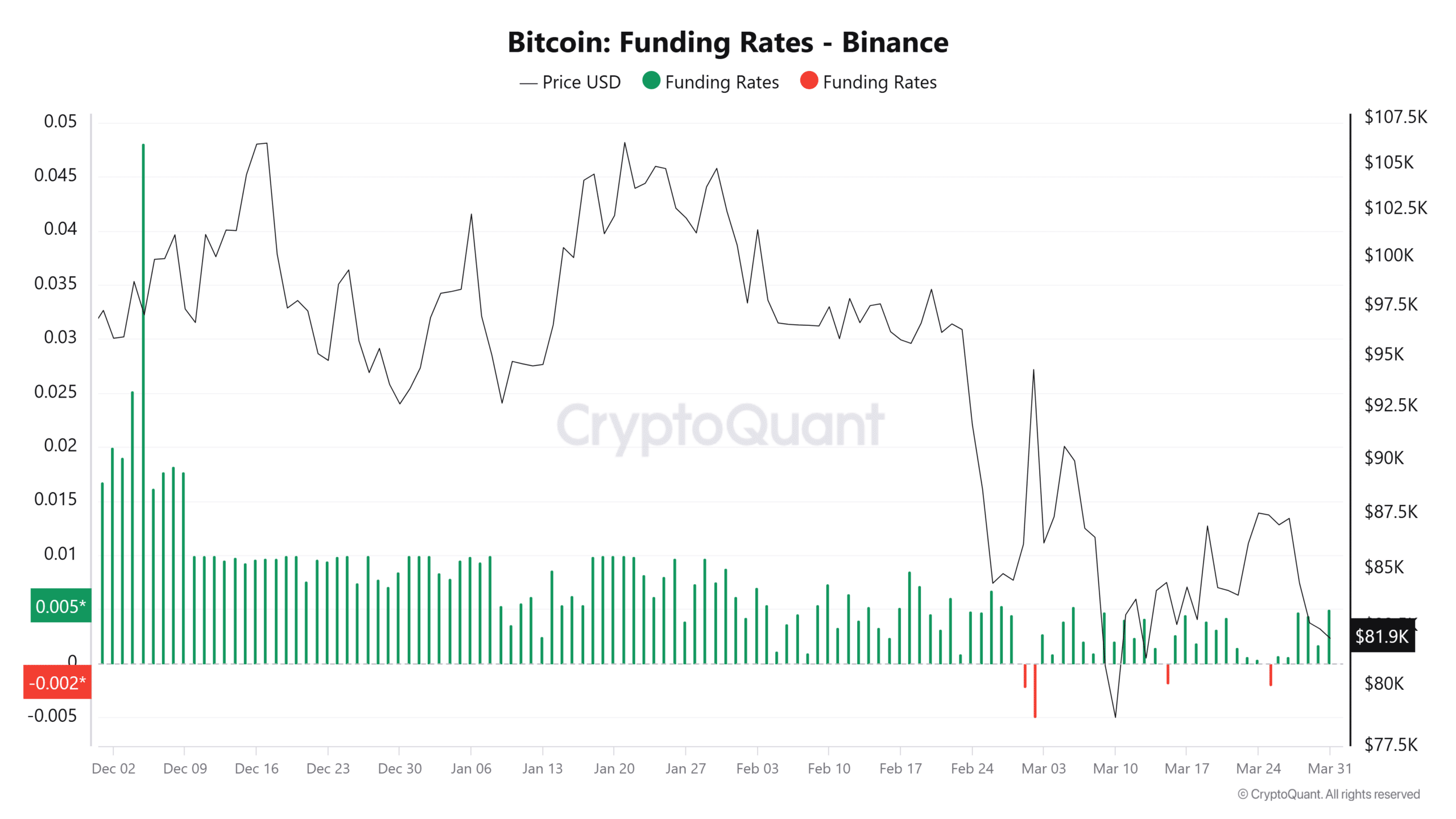

Source: CryptoQuant
Between 24-28 March, rates were negative—indicating short-dominant sentiment. However, by 30 March, that flipped. Positive funding rates now mean rising long exposure. It’s a key sentiment shift. Shorts may be closing, and longs may be beginning to re-enter.
Pair this with Open Interest and the picture sharpens.
The calm before the move?
Open interest fell from $25.39 billion to $23.12 billion over the last week of March. The sharpest decline came on 28 March. That drop indicated large position closures or liquidations.
As Open Interest falls and funding rises, it often marks the early stages of market repositioning.
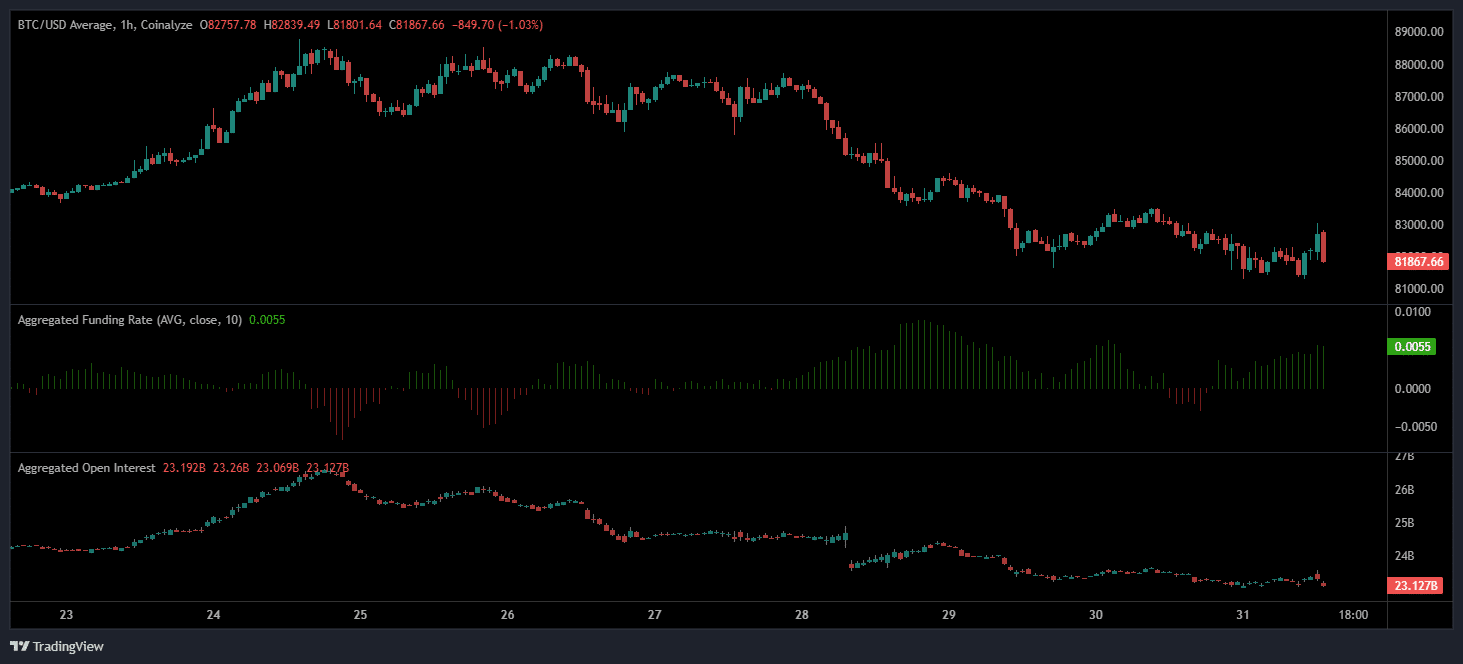

Source: Coinalyze
Shorts outweighed longs by 1.5–2x, triggering a setup historically linked to 60–65% upward volatility, as per TheKingfisher. Current liquidation clusters meet that threshold, with a key resistance at $83,100.
A break above $83,100 may push Bitcoin towards $83,500, with low resistance extending to $83,877. Heatmap data revealed minimal order friction in this range, resembling prior short squeezes.
If Bitcoin fails to clear resistance, bearish sentiment may return. Especially if funding flips negative or inflows decline. However, with compressed shorts, positive funding, and aligned heatmaps, the short-term bias might be leaning bullish.
Hence, market timing remains critical. And, the window for upside is narrowing.

